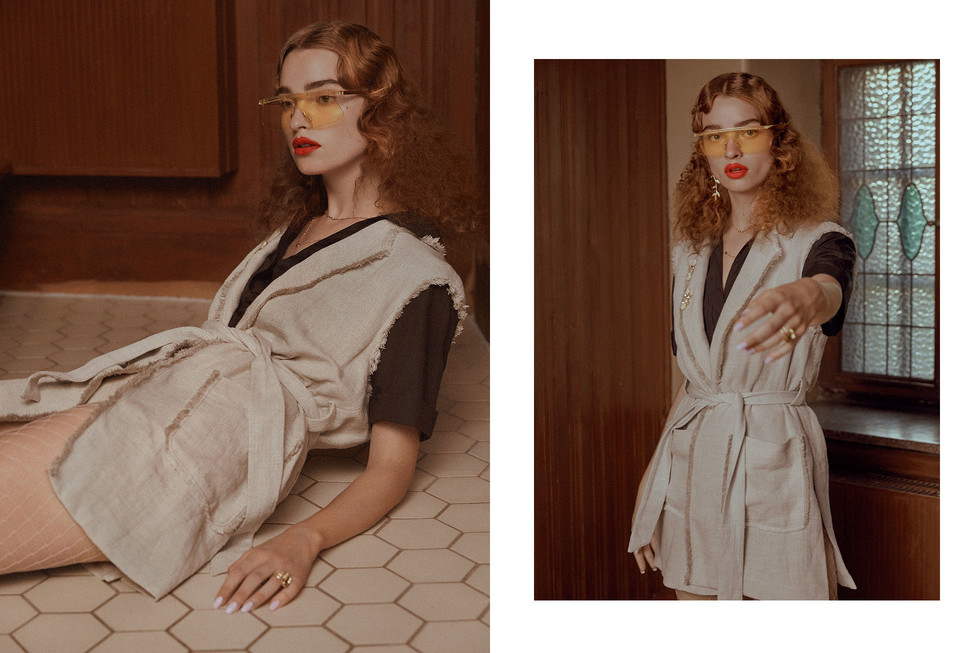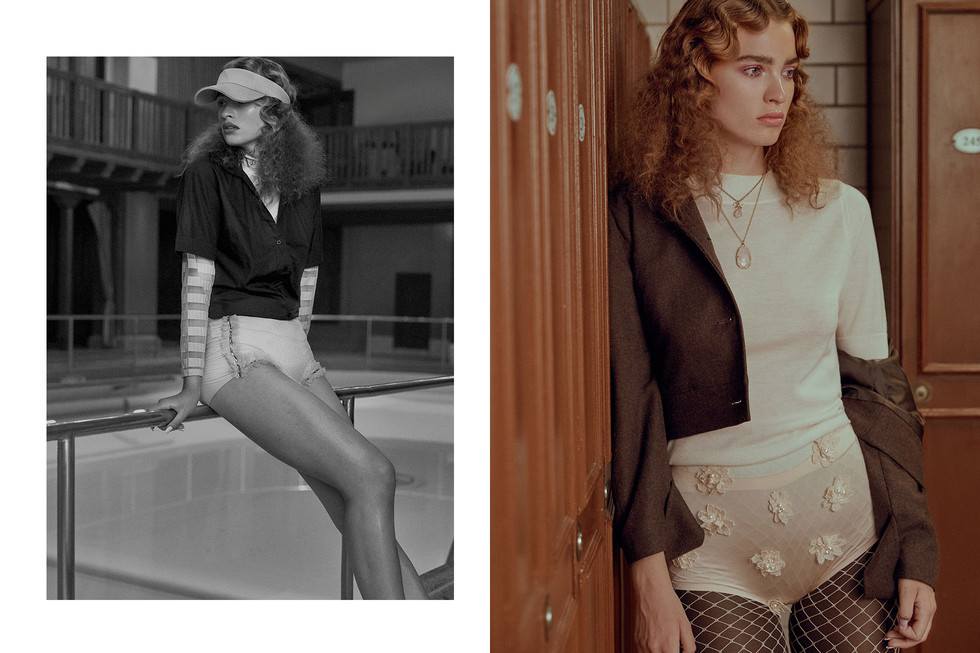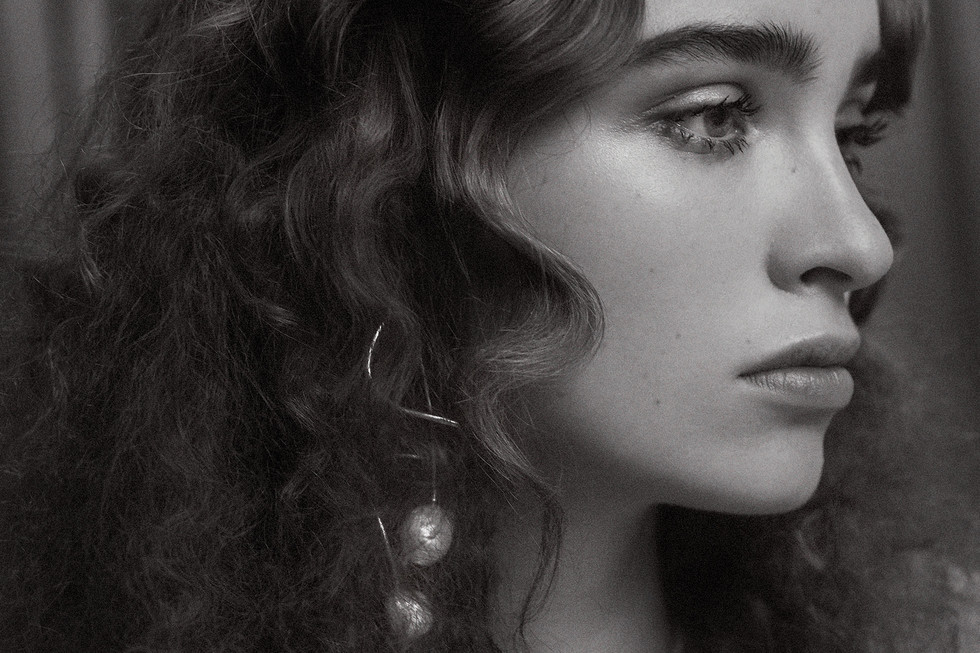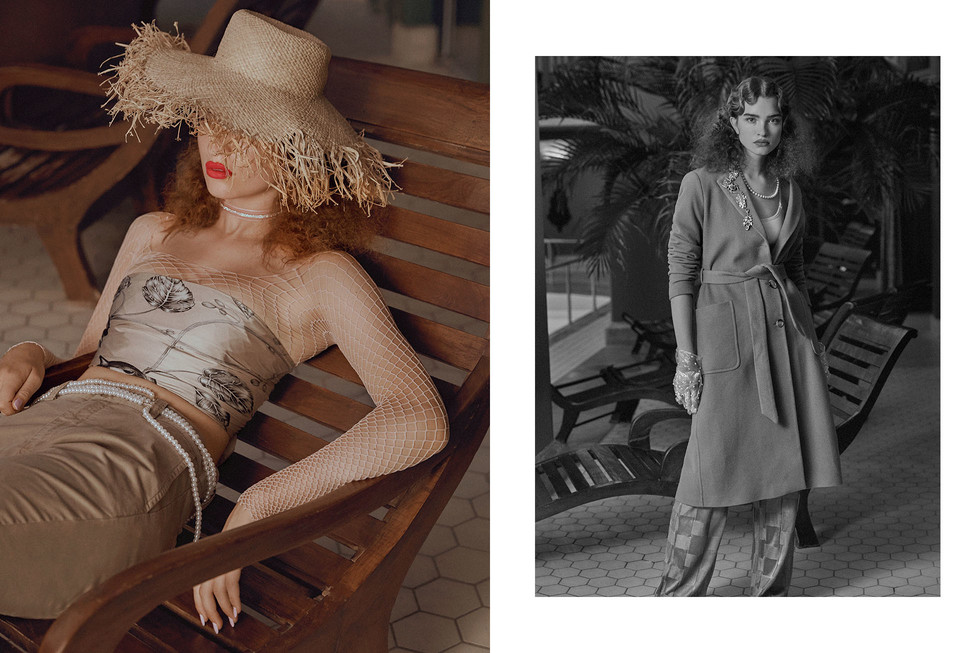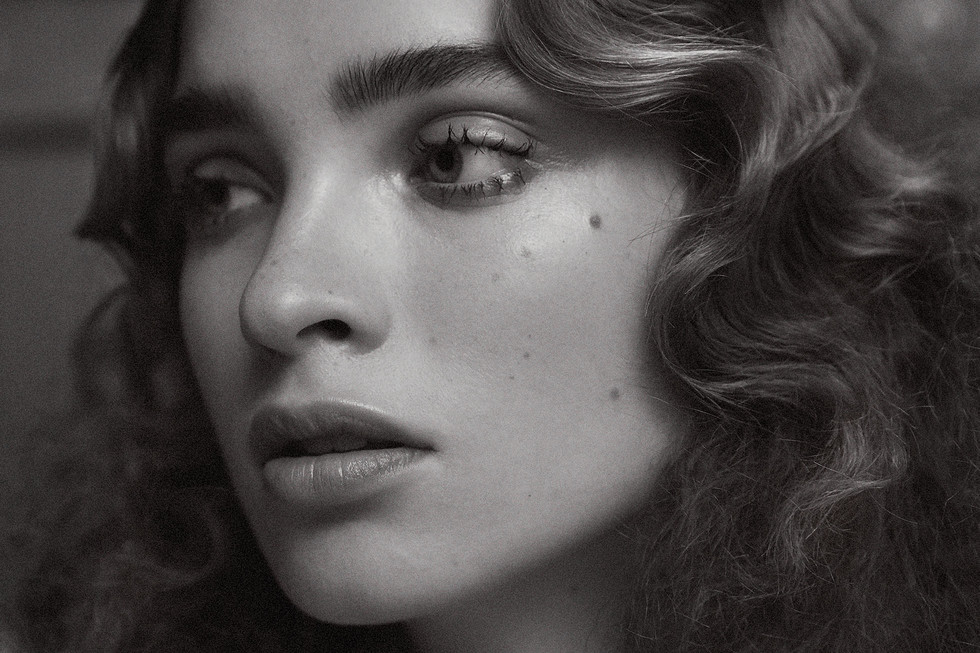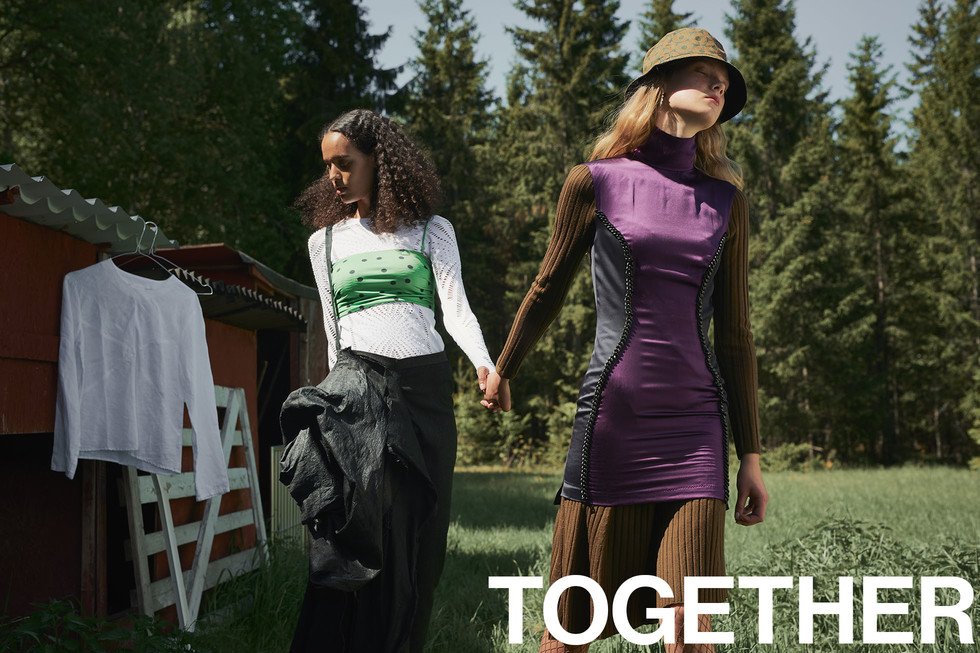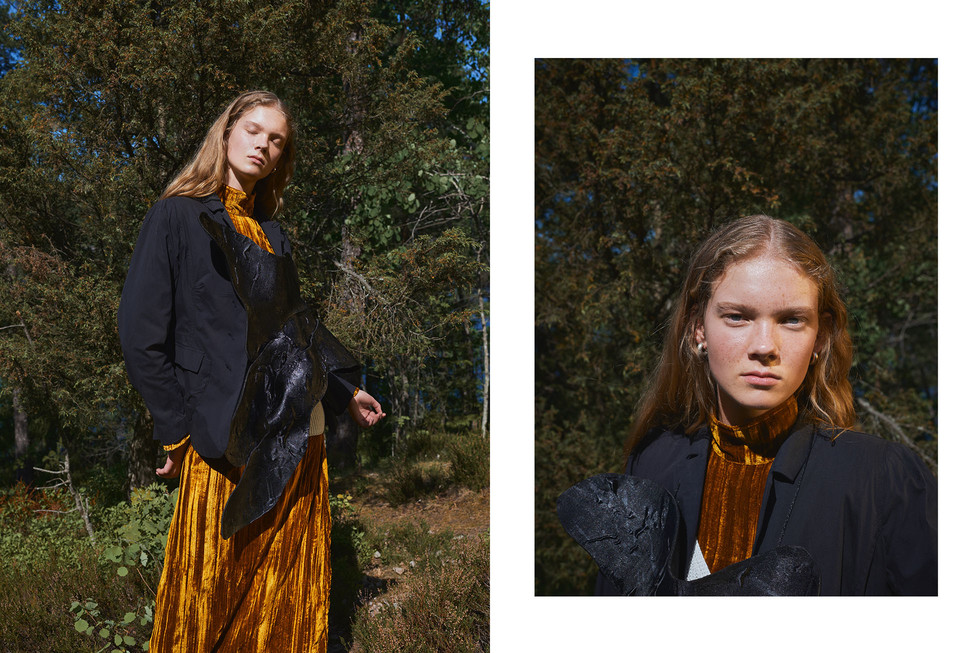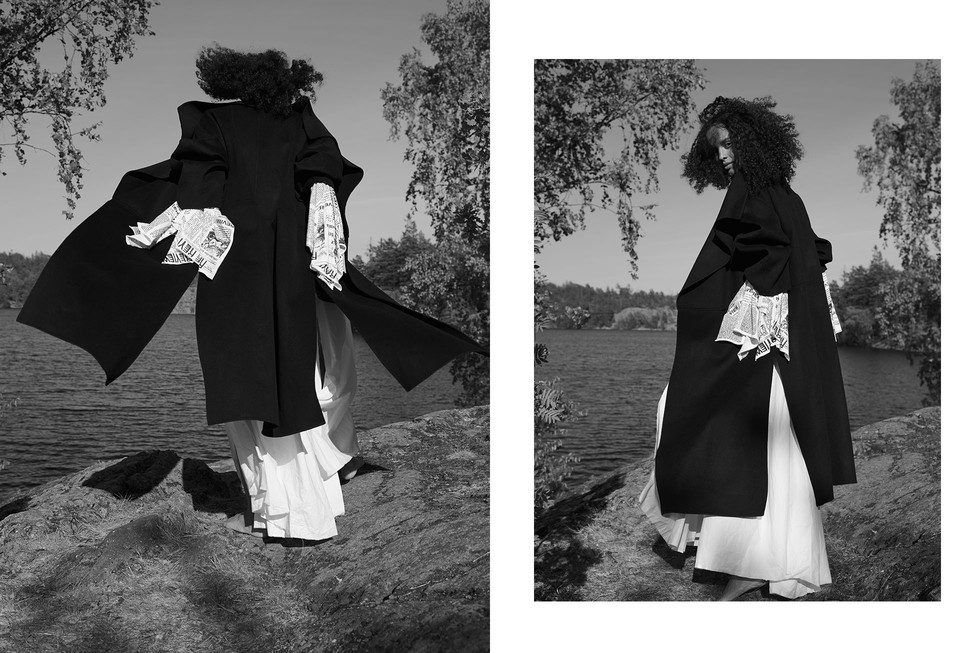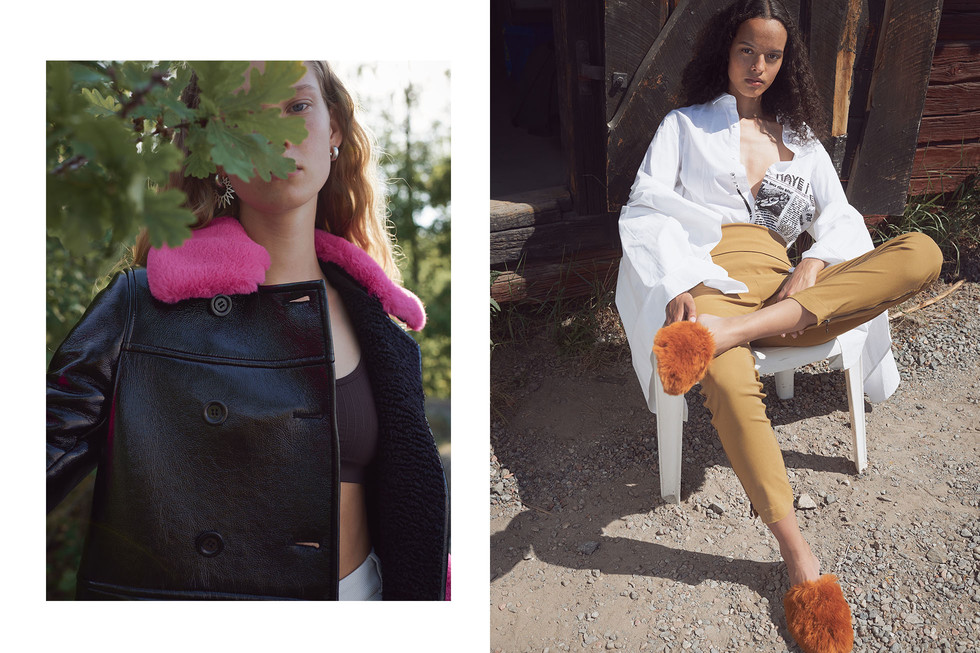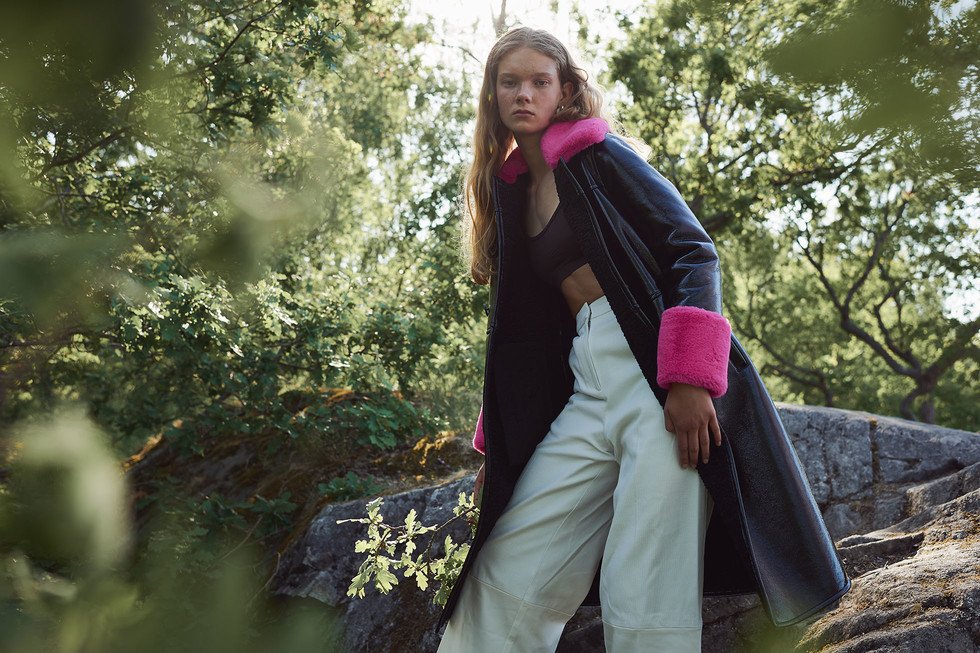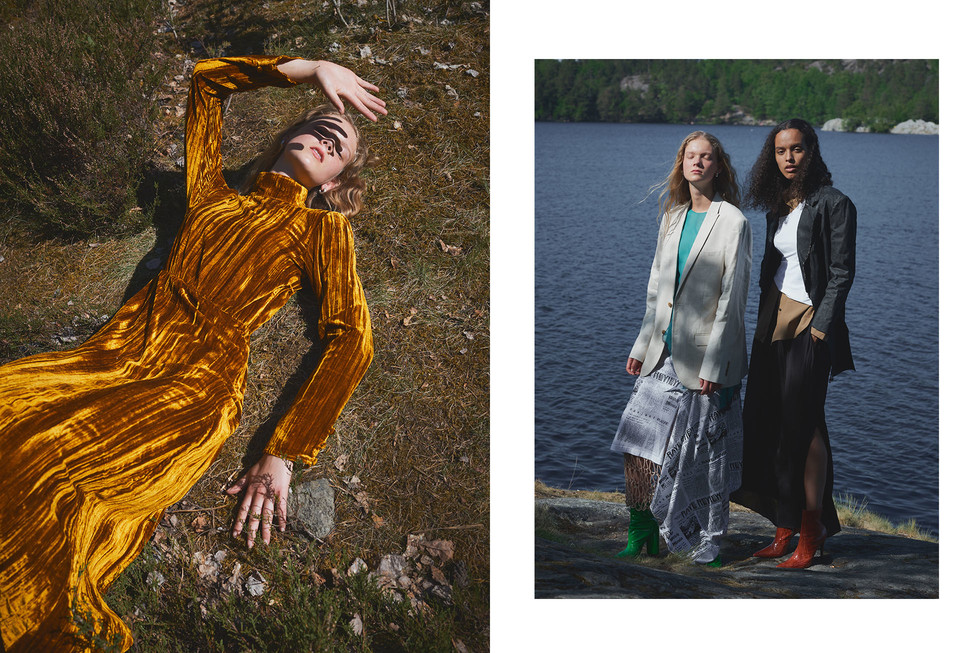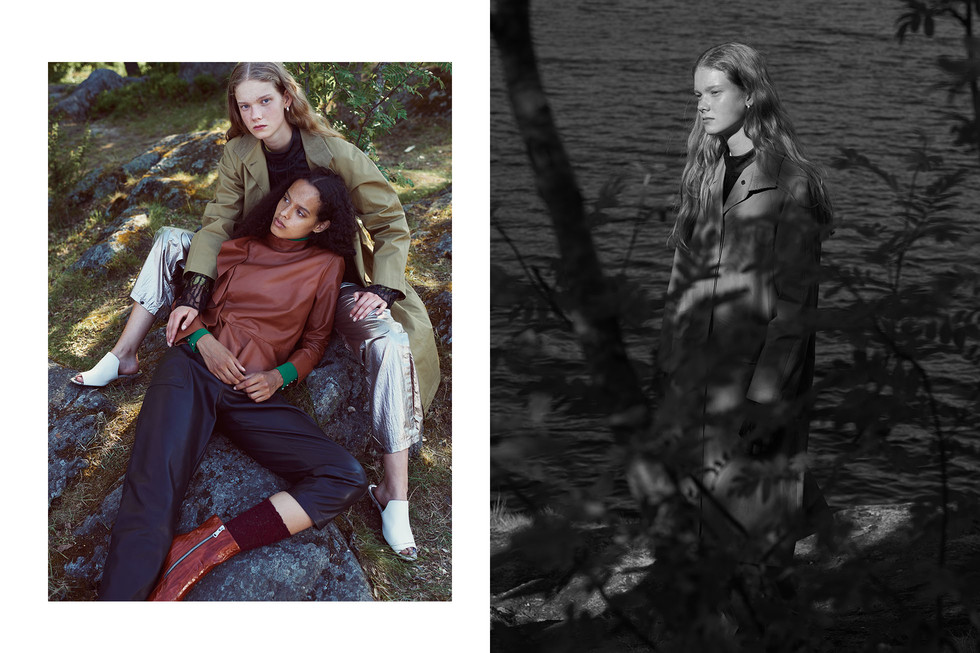Evelyn Bencicova was born in Bratislava just a few days before Slovakia became an independent republic. Nevertheless, she could experience the heritage from the socialistic past that provided her with important evidence to base the understanding of the postmodernity upon. Having a vivid imagination and great ability to create stories in her head, Evelyn converted it into her own visual language, giving the beholder a hint and offering the latter to conceive own interpretation of her art works.
Her first major solo exhibition Merror (error/mirror) at Fotografiska has been a fusion of the conceptual and the visual, bestowing the audience with ambiguous feelings, evoked by human bodies, animals, architectonic structures, fashion, portraits and gasmasks. Evelyn appears to be unique in her ability ‘to meet the other people’, showing a genuine interest in her objects and their communication with the world in the context of her eerie artworks. The photographs create an emotional withdrawal from the reality by intensifying its errors and opening up a mysterious layer for the audience, experiencing an intellectual turbulence.
The series 'ASYMPTOTE', created by Evelyn together with Adam Csoka Keller (video) and Arielle Esther (sound), consists of “a complex of illustrations of the era and a kind of eye-opener especially for the younger generation”, which juxtaposing human and architecture into an ideological hereditary integrity. It creates a deep reflexion over the artworks as such and the reality they seem to be interpreting placed in the context of the individual perception.
The Victorian paleness of the models posing in long Dior dresses enhances the postmodern discourse about the disruptive power of fashion and thereby creates an intellectual interplay between the context presented in the photographs and the reality outside those.
Seemingly, Evelyn’s art creates a sublime platform for an emotional dialogue between the artworks and the beholder, where the artist plays the role of a mediator, reconciling the visual with the conceptual.
How did you find your way to the world of photography/visionary arts?
This is the question I am now answering a lot. But it is interesting to be asked again and again, because I do not want to be bored by my own answer, really trying to look deeper and deeper. I do not find the photography to be my main point. So the moment I started learning photography, does not mean for me the start of my real work. During your whole life you are continuously developing your visual sense. While working with photography, I work on my vision.
As a child, I would never sleep at kindergarten, observing any object instead and creating a story about it. My family lived in a proper flat, which as a jest was called ‘prison’, due to the view from the window, which consisted of a square of windows of other people. I used to take binoculars and watch the people in those windows, without any thought about photography. It was my favourite activity. You could see a certain frame of a photograph with somebody in it, doing something and you could just create a whole story around it, using your imagination. I took those stories out of my imagination without knowing how to grasp it and I did not really care or saw it as a chance to do something; I just kept myself busy. I think this is what happens in the minds of a lot of people, if not everyone.
Before I turned eighteen, I had a very bad eyesight and relied on my imagination in order to able to ‘see’, while my visual fascination did not work that well. Then I undergone an eye surgery, where my sight was totally repaired. For me it felt like I went from darkness to light, like in Plato’s Allegory of the Cave. I was aware of things having meaning but the visual part was not that clear for me. Thus from that moment I really felt that I had just discovered the world visually. In my photography I am less interested in documenting and much more interested in a dialogue. Trying to understand the term ‘photographer’, I see that it has a defence layer, what creates a strange relationship between me and photography. Before, I was convinced that I was a photographer, now, when I am saying the word, I am not so sure anymore. I do not know what I am.
When I look at some of your photos, I recall the quote, belonging to the disillusioned and paranoid Dr Snaut from Tarkovsky’s movie Solaris (1972): “We don’t want to conquer space at all. We want to expand Earth endlessly. We don’t want other worlds, we want a mirror.” Do you see any of it in your works?
Not intentionally, actually. Nevertheless, I am acquainted with his film called ‘Zerkalo’ (‘The Mirror’). A lot of my work is based on the intuition, therefore I like people telling me about their associations and impressions of my work, where we together create a new perception. To create a name for a project has always been difficult for me because each project is very different from others. The name of the current work “Merror” is very intuitional and it kind of spoke to me, because it is composition of two worlds. There is a mirror but there is also an error. The project tells my personal story and really reflects on me but at the same time it creates a story for people to be able to visualize their own story. I do not want people to follow a certain direction, whether it is political or not, for example. There is a layer in there but it is also about how you can interpret the latter yourself and find your own explanation. I want people to see themselves and their own emotions. At the same time it also influences how you look at the body aesthetic. The bodies are perfect and controlled but there is something in there, like a crack, which is very, very tiny. But when you see it, it is actually the way inside. The mirror is slight but you should go under the surface and look inside. For me layers are very, very important in life, in work. When you get to know an artist, you suddenly start looking at his/her works very differently.
Who are the people in your photographs?
They are friends. Some photographs were taken 4-5 years ago, like in ‘Ecce Homo’. It was one of my first works and looking at those today I find them very strong. I was totally different at that time, a bit more expressive. I am aware that these works can be interpreted in many contrasting ways, but I do not want to be afraid of that. I am inspired by how humans change over time.
What is really human body for you? Is it a part of the human being as an intellectual unit and an identity or it is a toll which been admired, used and abused both physically and ideologically?
It depends on the project, because I deal a lot with human body in different contexts, what you can see in my works. I do not have one established vision, because I believe that the human body can be interpreted in various contexts. I am interested in all of them. I like to see the body essence as something admirable and also as a part of the nationalist context as in ‘Asymptote’, when people as a part of the system, believe that they are a part of something bigger.
Concerning the architecture, 'ASYMPTOTE' was done inside a building which once was a key point for the Socialism. It is a huge and monumental, making you feel very small. Notwithstanding the fact that the place is abandoned now, it creates a feeling of grotesque, when you are standing in the huge empty hall. It is also about being overwhelmed with the collective body, where individuals are losing their own, because they believe in something. It is about recreation that does not aim to be a reality but a subject of a personal interpretation. We were trying to understand what the word ‘visual’ really means.
Once we were filming a scene with female gymnasts jumping together simultaneously, one of the girls could not just cope with that by being tired and slower. Then I had to step in telling her, ‘No! Faster! Faster!’ And suddenly I realised how crazy it actually was, when a person could not fit in and was eliminated for falling out of the ‘perfection’. It was interesting to explore that layer in the system. Another interesting layer is about the today’s reality with the experience from the past. I am not saying that something is right or wrong. I met people who spent a few years in prison for expressing their opinion and people who felt honoured to have been a part of the system. There is no judgement from my side but a certain reaction. Another example is the photograph, depicting children wearing gasmasks, which we once at school learned how to use. Children of today do not use those anymore but there are still shelters full with such gasmasks. They are of no use but they still stay there. There is hidden history behind it that people do not want to touch, pretending it is not there. But it is necessary to touch it in order to create and to understand a country’s identity.
There are a lot of theories and opinions about the body in space, and I do not know which one is right. I am just trying to explore more and more and it seems to me that nothing is really right. I do not feel I can do a statement, because I am observing right now. I try to express something without claiming it being a truth. It is about exploring. The process of creating for me is always more interesting than the result as such.
People never smile in your fashion photographs. Why? What does it symbolize?
This is something I am thinking about a lot. It might be my personality. Nevertheless, I have very light personality but I do not find smile as something positive. People might think that I am creating a negative image, but smile can actually mean something negative to me, being a way of hiding certain things. My view on what is negative and what is positive differs quite a bit from many other people’s interpretation. Cemetery for me, for example, is just a peaceful place. I also work a lot with individuals and for me the composition is of high importance, where people feel confident. Thus I try to make them comfortable to be able to show their confidence by asking them how they feel. How people react in front of the camera is a result of their own reflection, I would never interfere in that part. However, not smiling might for some of them be the way to show the confidence.
On your webpage it is said that you combine your academic research with interest in contemporary visual culture. Could you please say a couple of words about it?
I study at a very classic art school. From the beginning I was trying to create a world that would communicate. I think from art to the world there is something unusual, because people do not have to communicate with their work. When I have a commission within fashion and advertisement, I really try to create a work which is valuable but through the media it also gets attention from people. For example in art people have a concept, but they do not try to communicate their concept, what means it stays clear for them, while the audience gets lost. I think you have to give people a chance to interpret your work. This is what I am trying to do the whole time – to have a conversation with people. I do not feel that art world is refusing everything. Visual is not the only thing that exists in there, I think there is also a meaning. And for me the visual and the meaning is something that should be connected, because one without the other is not enough. I always try to give people a visual clue, either it is a commercial work or an assignment at school.
http://evelynbencicova.com/

